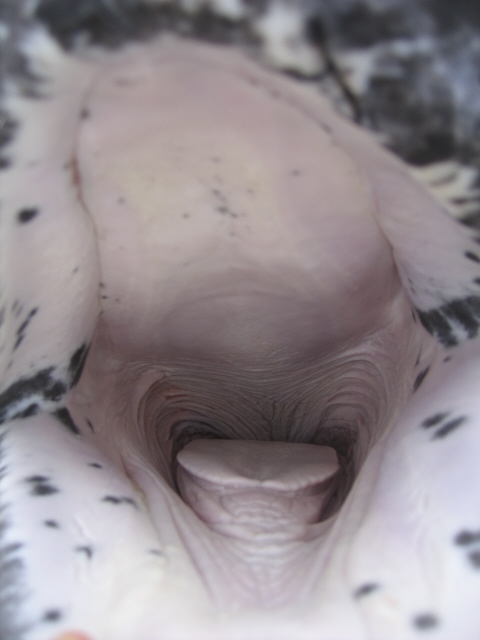For a dentist, the narwhal’s smile is a mystery of evolution
When a dentist says “open wide,” he or she knows pretty much what they’ll find inside a patient’s mouth. But when a dentist peers into the mouth of an Arctic narwhal, all bets are off.
“Nothing makes sense,” explains Martin Nweeia, a practicing New England dentist and member of the Smithsonian’s Department of Vertebrate Zoology and the Harvard School of Dental Medicine. For one, narwhals have no teeth. “They eat large fish, yet swallow them whole. If you look in its mouth there’s nothing. There are absolutely no teeth.”
Incredibly, the narwhal’s only visible tooth is outside of its mouth. Its tusk, in fact, is a giant canine tooth—that can grow as long as 9 feet—with a distinct left-hand spiral, covered in a tissue called cementum, normally only found around the base of a tooth lodged in bone.
Nweeia and a team of dentists and zoologists from the Smithsonian’s National Museum of Natural History, Harvard and other research organizations recently took a very close look at the dentition of the narwhal’s mouth. They studied more than 130 skulls in museum collections and 21 skulls of narwhals killed by native hunters in Canada. In a new paper published in The Anatomical Record, the team determined:
- The long spiral tusk of the male narwhal is one of a pair of canine teeth positioned horizontally in the animal’s skull. They determined it was a canine and not an incisor because the tusk originates in the narwhal’s maxillary bone, where canine teeth in mammals originate. This is the first study to confirm the tusk as a canine tooth. In most mammals, canines are vertical in the mouth and are used for holding food or as weapons.
- It is the left tooth of the pair that grows into a long tusk that erupts through the narwhal’s upper lip. The right canine tooth is also a tusk but it remains embedded in the narwhal’s skull unerrupted. Only occasionally do both tusks erupt. Female narwhals have two embedded tusks that erupt only very rarely.

A second pair of tiny teeth is located in open tooth sockets in the narwhal’s snout alongside the tusks. These teeth are vestigial, meaning they have no function. Close inspection across many specimens reveal extreme variation in location, morphology and histology (tissue structure) of these teeth, all indications they “are following a pattern consistent with evolutionary obsolescence,” the scientists write.
“It is striking when you think that this animal decided to take all of its tooth-producing energy and put it into one thing [a tusk] that sticks out nine feet into the ocean. With the amount of energy that it takes to produce that one tusk it could easily have 30 to 40 teeth in its mouth doing other things,” Nweeia explains. “Evolutionary-wise something is saying don’t do this, instead it is better to grow this extraordinary tusk.” A pretty compelling reason must be behind such a decision.”
Did the narwhal once have teeth oriented vertically in its mouth as do other mammals? “One might assume this animal once had more teeth positioned vertically in the mouth, but there is no evolutionary evidence to say that would be true,” Nweeia explains. “With whales the evolutionary pieces of the puzzle are scant and I prefer to leave speculation out of the equation.”

There are many kinds of curious expressions of teeth in whales, narwhals being the most extraordinary, Nweeia says. “The strap-toothed whale, for example, has two teeth that wrap over its upper jaw preventing the animal from opening its mouth.”
“The whole thing that is great about the teeth of the narwhal is that nothing makes sense,” Nweeia adds. “The tusks are an extreme example of dental asymmetry. They exhibit uncharacteristic dimorphic or sexual expressions since females do not exhibit erupted tusks as commonly as males. Also, the tusk has a straight axis and a spiraled morphology. Conventional mechanisms of evolution do not help explain these expressions of teeth.”–John Barrat
Article link: “Vestigial Tooth Anatomy and Tusk Nomenclature for Monodon monoceros,” The Anatomical Record, April 2012. Authored by Martin T. Nweeia, Frederick C. Eichmiller, Peter V. Hauschka, Ethan Tyler, James G. Mead, Charles W. Potter, David P. Angnatsiak, Pierre R. Richard, Jack R. Orr, and Sandie R. Black.
Note: For more information on narwhals and their tusks please visit the Narwhal Tusk Research website.


